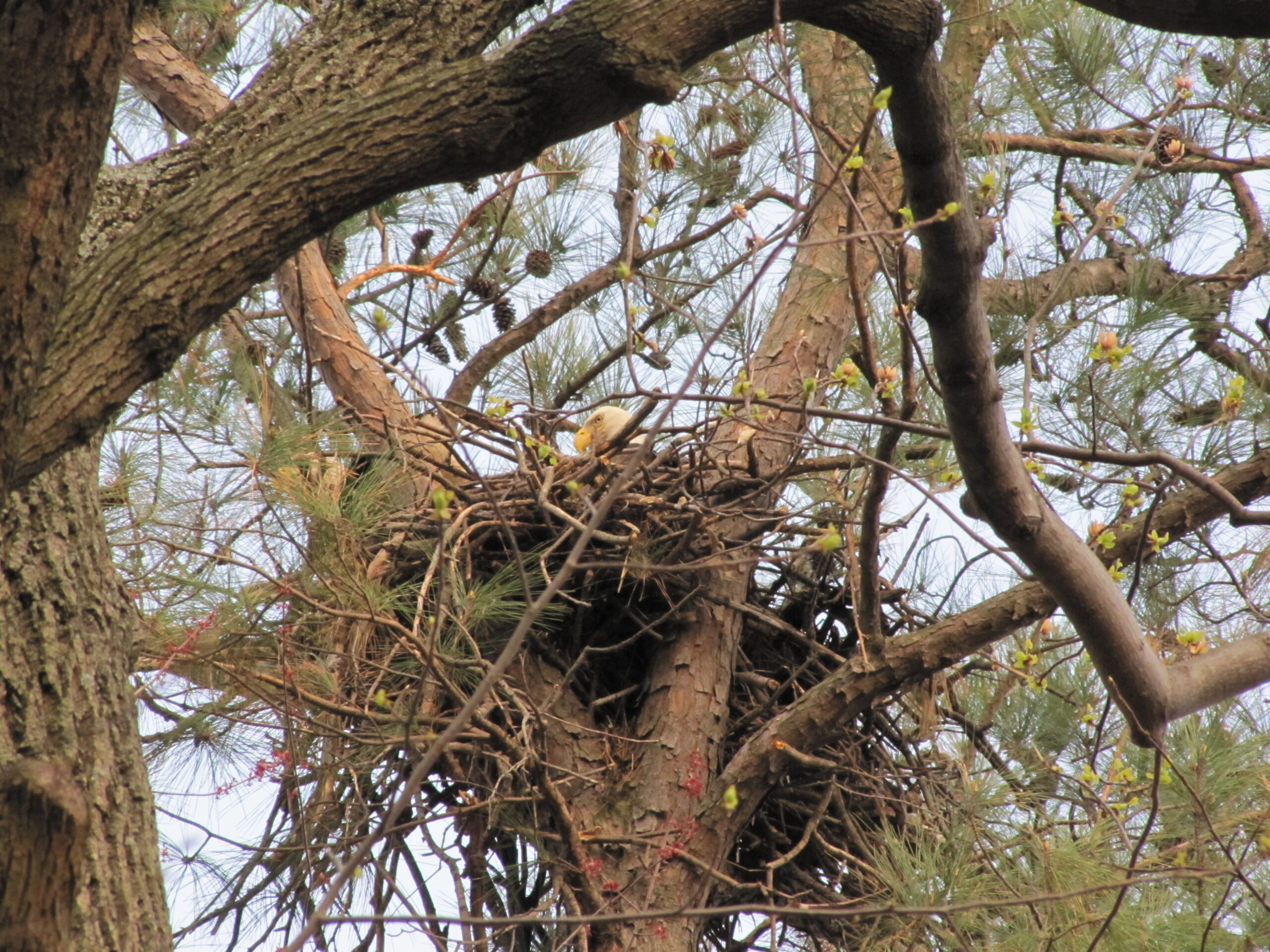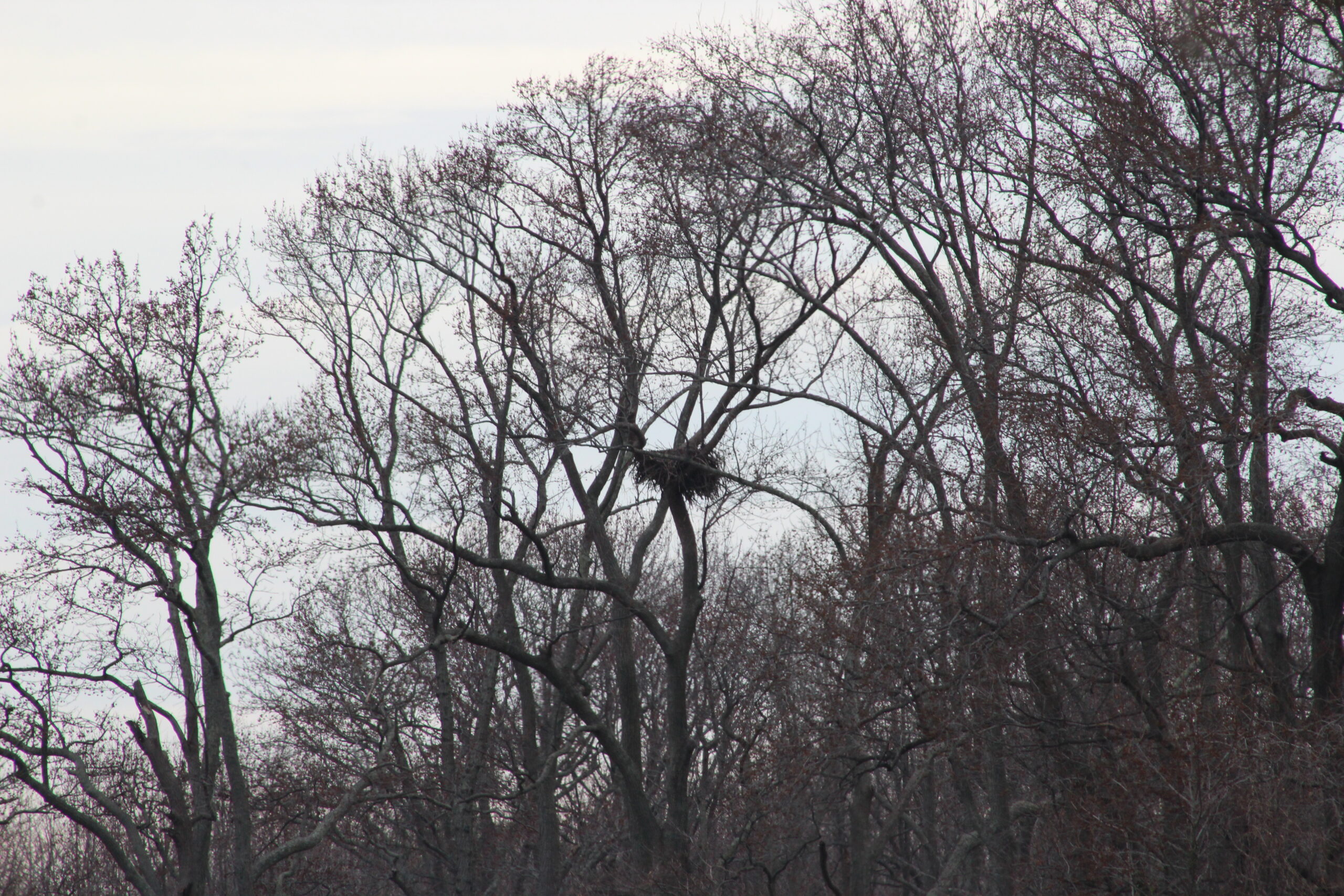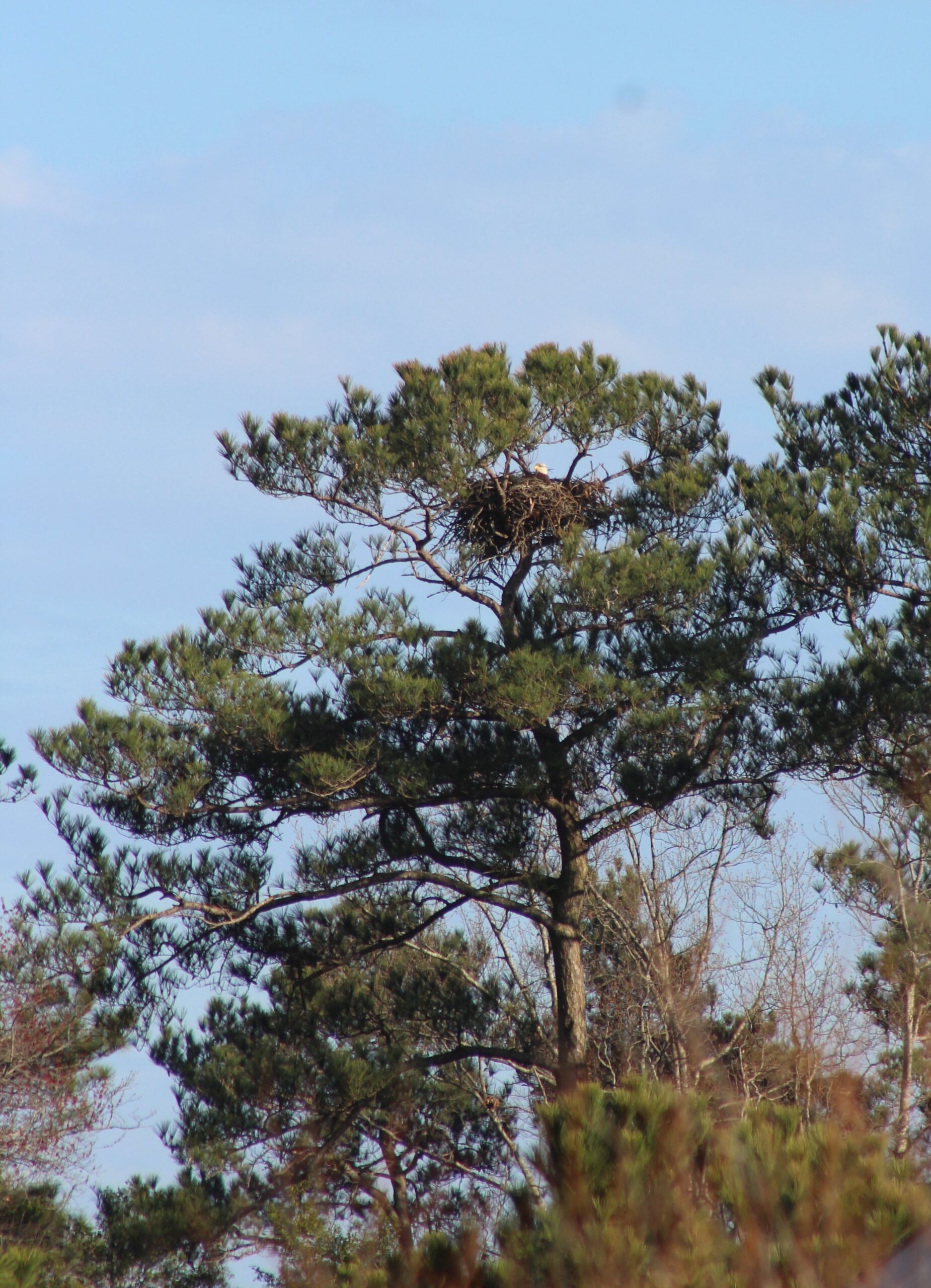
Even though it is still winter, now is the time to start searching for Bald Eagle nests. Their courtship has already occurred. They started building their nests around Thanksgiving or have already added sticks to the nest that they used last year. They won’t have laid eggs just yet, except perhaps on the lower Eastern Shore or extreme southern Maryland, but it’s easier to find their large stick nests while the trees are bare of leaves. Once the leaves come out, it is much tougher to find their nests.
In Maryland, the majority of Bald Eagles nest in the counties surrounding the Chesapeake Bay. During the second breeding bird atlas, eagles nested in most of the blocks along the Bay and its major tidal tributaries. Further west of the Bay, eagles usually nest in the vicinity of large lakes and reservoirs or near large rivers like the Monocacy, Pocomoke, Susquehanna, and upper Potomac. Most eagle nests are within one mile of these large bodies of water. They also nest near the coastal bays behind Assateague Island and Ocean City.
Bald Eagles build huge nests of sticks towards the top of a large tree. The nest will be built near the tree trunk on large tree limbs, not out on the tips of the limbs. The only bird here that builds a nest similar in size is the Osprey, though their nests are usually in dead trees or on man-made structures. Bald Eagles usually nest in live trees; loblolly pines in southern Maryland and the lower Eastern Shore and deciduous trees elsewhere in the state. Nests are usually built in trees along the edge of the woods instead of deep in the forest. Some eagle nests occur in single trees or in hedgerow trees. In pine country, Bald Eagles often will build their nest in a pine tree left standing after a timber harvest.

Bald Eagle nest in December by Glenn Therres
Now is a good time to go searching for an eagle nest or two. I recommend driving around on back roads in blocks near large bodies of water and looking for a large pile of sticks in the top of a tree. Searching from a small airplane is even better, but I suspect most of you do not have that option. Too bad. During my 18 years of flying eagle surveys for DNR, we found lots of Bald Eagle nests that way. If you have a boat, searching along the shorelines from the water is another good way to find eagle nests.
January, February, and March are good months to look for nests since there are no leaves on the deciduous trees and the adults may be sitting nearby. In pine country, finding nests is more difficult. If you see two adult Bald Eagles sitting near each other, look hard in the pine trees nearby for a nest. If you find a nest, your observation can be recorded as code P (pair in suitable habitat) since no other territorial eagles would allow two other adults to sit near their nest. Because our breeding Bald Eagles start nesting before the migrant eagles have moved north, two adult eagles near each other does not necessarily make them a breeding pair. The Chesapeake Bay region is a major wintering area for migrant Bald Eagles. While our breeding pairs are starting to nest, there are hundreds of eagles from the north wintering in Maryland at the same time. The safe dates for Bald Eagle start on April 15, which is when all adult migrants are out of the state and on their way to their breeding grounds in Maine, New York, New England, and eastern Canada.
If you see a white head near the trunk of a pine tree while searching, look really hard for a nest under the white. Eagles usually do not roost close to the tree trunk. Once you find the nest, mark its location so you can come back in March when there should be eggs in the nest. While incubating, one adult eagle will be deep in the nest with only its white head visible. When you see that, you have Confirmed the nesting as an occupied nest (code ON) since there are either eggs or small young under the adult that you cannot see. If you come back later in the spring and observe young standing in the nest, you can upgrade the Confirmation to nest with young (code NY). Most of the young will fledge by July.

Bald Eagle nest in a pine tree by Glenn Therres
It will take a lot of driving around to find a nest and you will not be successful in every block. Not every eagle nest in a block will be visible from a road. Other techniques may be needed. For those blocks in which you did not find an eagle nest, try again next year.
I found five Bald Eagle nests in five different Queen Anne’s County blocks during the first year of the Atlas using the driving technique; three in deciduous trees and two in pine trees. There were another four blocks in which I came up empty. In 2021, I drove around in seven blocks in February and March but did not find a single new nest in a block that needed a Bald Eagle confirmation. Most of those blocks were further away from big open water. Better luck this year!
Even if you don’t find an eagle nest in the block, driving around at this time of year is a good way to locate good breeding bird habitat for all the other species you need to find in the upcoming nesting season. Keep your eyes opened for those huge piles of sticks and good luck with your Atlas efforts!
Author: Glenn Therres, Queen Anne’s County Coordinator


